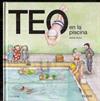
Sepulchre
1 journaler for this copy...
'The soul of another is a dark forest in which one must tread carefully.' -- Claude Debussy
'The true Tarot is symbolism; it speaks no other language and offers no other sign.' -- Arthur Edward Waite
'This story begins in a city of bones. In the alleyways of the dead. In the silent boulevards, promenades and impasses of the Cimetière de Montmartre in Paris, a place inhabited by tombs and stone angels and the loitering ghosts of those forgotten before before they are even cold in their graves.' -- Kate Mosse
Sepulchre by Kate Mosse was the follow-on novel to Labyrinth, her hugely successful third novel. Superficially the two novels appear to be the same.
Labyrinth was dismissed by many as another 'me too' Da Vinci Code, though much better written. Is Sepulchre a 'me too' Labyrinth?
Like Labyrinth, Sepulchre is set in and around Carcassonne; like Labyrinth, Sepulchre time shifts between past and present, with a connection between the two heroines. But there the comparison ends. Labyrinth is a well written novel, the only conclusion to be reached with Sepulchre after labouring through the first one hundred pages is that Sepulchre is an extremely boring novel that should never have seen the light of day. A grave disappointment after Labyrinth. At least that was the view for the first 100 pages.
After the first 100 pages, Sepulchre does start to slowly, slowly improve, or maybe ones senses have now become dulled.
The height of irony, The Da Vinci Code gets a mention in Sepulchre!
Kate Mosse weaves into her novel the mysteries surrounding Rennes-le-Château and Bérenger Saunière. Whether she is drawing upon local sources, she spends her time between Carcassonne and Sussex, or whether she is drawing upon Holy Blood and the Holy Grail by Michael Baigent, Richard Leigh and Henry Lincoln, she does not say, though Holy Blood and the Holy Grail and The Da Vinci Code do get woven into her novel, if only to dismiss as the work of conspiracy theorists.
Dan Brown makes indirect reference to Rennes-le-Château in his novel The Da Vinci Code, by intriguingly using the name of Saunière for the curator of the Louvre Jacques Saunière, found ritually murdered in the Louvre. A man we later learn was the Grand Master of the Priory of Sion! Priory of Sion had strong connections to Rennes-le-Château. The name of his heroine Sophie Neveu, granddaughter of the Louvre Curator, may be derived from Pierre Neveu, 16th century priest of Gisors. A later priest of Gisors was brutally murdered.
As a result of this exposure, Rennes-le-Château now attracts large numbers of visitors bent on a search for hidden treasures. In September 2004, the mayor of Rennes-le-Château exhumed Saunière's corpse from the church graveyard and reburied it in a concrete sarcophagus to protect it from grave-robbers!
Sepulchre alternates between the past of September-October 1891 and the present day of October 2008, several chapters are devoted to each. The switch between the two is very disconcerting, no sooner have you got into one period, than it switches to the other. I found these to be good places to take a break.
There is a subtle difference in writing style between the two periods. The past has shades of Ann Radcliffe and Edgar Allan Poe, not just his horror, but also his detective Auguste Dupin. The present is too much like bad American thriller writing and worst of all is the constant product placement which is extremely irritating. The romance between Meredith and Hal is yucky.
Occasionally Kate Mosse drops an enormous clanger. Our modern-day heroine Meredith is an American academic in France researching a forthcoming book on Debussy and taking advantage of her trip to look into her own family background. When she needs to check something out she goes on-line to Wikipedia!
Urgh! No self-respecting researcher would use Wikipedia. Wikipedia is a flawed source. Some academics quite rightly bar their students from using Wikipedia. The best it can be used for is links to elsewhere and other references. When those knowledgeable of a subject try to correct errors or to add useful information they find their efforts undone. Wikipedia is as good as the lowest level of ignorance editing a page. As example, Capturing Lincoln Cathedral is an excellent photographic guide to Lincoln Cathedral. When a link was supplied to a page giving further information on the book and the controversy surrounding its publication, the link was promptly removed. Corrections to a page on Brighton turned very nasty. [see Capturing Lincoln Cathedral and Wikipedia Brighton page embroiled in controversy]
Lincoln Cathedral was used as a set for the film of The Da Vinci Code. No images of the set appear in Capturing Lincoln Cathedral.
The first one hundred pages of Sepulchre are dire and in serious need of drastic editing, after that the book does improve.
Sepulchre is different from Labyrinth, at times it is maybe not quite a satire of The Da Vinci Code but certainly one does get a sense of a tongue in cheek being poked in that direction.
A Gothic tale that cleverly weaves the Tarot cards with the mysteries surrounding Rennes-le-Château and Bérenger Saunière.
The Vernier Tarot was commissioned for Sepulchre. The eight main characters, painted by Finn Campbell-Notman, illustrate the inside covers of the hardback edition of Sepulchre.
A book for autumn evenings.
Synchronicity: I was thinking of Ann Radcliffe and then our heroine finds books by Madame Radcliffe in the library of the country house where she is staying!
Synchronicity: I was talking with a friend about Holy Blood and the Holy Grail, The Da Vinci Code, Rennes-le-Château and Bérenger Saunière and how it caused an increase in tourists to Rennes-le-Château, when that evening I find virtually the same discussion in Sepulchre!
Also read:
Labyrinth by Kate Mosse [see BCID 5830417]
The Fall of the House of Usher by Edgar Allan Poe [see BCID 7055599]
The Mysteries of Udolpho by Ann Radcliffe [see BCID 7055594]
The Suspicions of Mr Whicher by Kate Summerscale [see BCID 7076996]
The Da Vinci Code by Dan Brown [see BCID 6727419]
Brida by Paulo Coelho [see BCID 5987613]
The Pilgrimage by Paul Coleho [see BCID 5849563]
By the River Piedra I Sat Down and Wept by Paul Coleho [see BCID 6346385]
The Alchemist by Paulo Coelho [see BCID 7048395]
The Devil and Miss Prym by Paulo Coelho [see BCID 6890579]
The Historian by by Elizabeth Kostova [see BCID 7064687]
The Gargoyle by Andrew Davidson [see BCID 7053086]
'The true Tarot is symbolism; it speaks no other language and offers no other sign.' -- Arthur Edward Waite
'This story begins in a city of bones. In the alleyways of the dead. In the silent boulevards, promenades and impasses of the Cimetière de Montmartre in Paris, a place inhabited by tombs and stone angels and the loitering ghosts of those forgotten before before they are even cold in their graves.' -- Kate Mosse
Sepulchre by Kate Mosse was the follow-on novel to Labyrinth, her hugely successful third novel. Superficially the two novels appear to be the same.
Labyrinth was dismissed by many as another 'me too' Da Vinci Code, though much better written. Is Sepulchre a 'me too' Labyrinth?
Like Labyrinth, Sepulchre is set in and around Carcassonne; like Labyrinth, Sepulchre time shifts between past and present, with a connection between the two heroines. But there the comparison ends. Labyrinth is a well written novel, the only conclusion to be reached with Sepulchre after labouring through the first one hundred pages is that Sepulchre is an extremely boring novel that should never have seen the light of day. A grave disappointment after Labyrinth. At least that was the view for the first 100 pages.
After the first 100 pages, Sepulchre does start to slowly, slowly improve, or maybe ones senses have now become dulled.
The height of irony, The Da Vinci Code gets a mention in Sepulchre!
Kate Mosse weaves into her novel the mysteries surrounding Rennes-le-Château and Bérenger Saunière. Whether she is drawing upon local sources, she spends her time between Carcassonne and Sussex, or whether she is drawing upon Holy Blood and the Holy Grail by Michael Baigent, Richard Leigh and Henry Lincoln, she does not say, though Holy Blood and the Holy Grail and The Da Vinci Code do get woven into her novel, if only to dismiss as the work of conspiracy theorists.
Dan Brown makes indirect reference to Rennes-le-Château in his novel The Da Vinci Code, by intriguingly using the name of Saunière for the curator of the Louvre Jacques Saunière, found ritually murdered in the Louvre. A man we later learn was the Grand Master of the Priory of Sion! Priory of Sion had strong connections to Rennes-le-Château. The name of his heroine Sophie Neveu, granddaughter of the Louvre Curator, may be derived from Pierre Neveu, 16th century priest of Gisors. A later priest of Gisors was brutally murdered.
As a result of this exposure, Rennes-le-Château now attracts large numbers of visitors bent on a search for hidden treasures. In September 2004, the mayor of Rennes-le-Château exhumed Saunière's corpse from the church graveyard and reburied it in a concrete sarcophagus to protect it from grave-robbers!
Sepulchre alternates between the past of September-October 1891 and the present day of October 2008, several chapters are devoted to each. The switch between the two is very disconcerting, no sooner have you got into one period, than it switches to the other. I found these to be good places to take a break.
There is a subtle difference in writing style between the two periods. The past has shades of Ann Radcliffe and Edgar Allan Poe, not just his horror, but also his detective Auguste Dupin. The present is too much like bad American thriller writing and worst of all is the constant product placement which is extremely irritating. The romance between Meredith and Hal is yucky.
Occasionally Kate Mosse drops an enormous clanger. Our modern-day heroine Meredith is an American academic in France researching a forthcoming book on Debussy and taking advantage of her trip to look into her own family background. When she needs to check something out she goes on-line to Wikipedia!
Urgh! No self-respecting researcher would use Wikipedia. Wikipedia is a flawed source. Some academics quite rightly bar their students from using Wikipedia. The best it can be used for is links to elsewhere and other references. When those knowledgeable of a subject try to correct errors or to add useful information they find their efforts undone. Wikipedia is as good as the lowest level of ignorance editing a page. As example, Capturing Lincoln Cathedral is an excellent photographic guide to Lincoln Cathedral. When a link was supplied to a page giving further information on the book and the controversy surrounding its publication, the link was promptly removed. Corrections to a page on Brighton turned very nasty. [see Capturing Lincoln Cathedral and Wikipedia Brighton page embroiled in controversy]
Lincoln Cathedral was used as a set for the film of The Da Vinci Code. No images of the set appear in Capturing Lincoln Cathedral.
The first one hundred pages of Sepulchre are dire and in serious need of drastic editing, after that the book does improve.
Sepulchre is different from Labyrinth, at times it is maybe not quite a satire of The Da Vinci Code but certainly one does get a sense of a tongue in cheek being poked in that direction.
A Gothic tale that cleverly weaves the Tarot cards with the mysteries surrounding Rennes-le-Château and Bérenger Saunière.
The Vernier Tarot was commissioned for Sepulchre. The eight main characters, painted by Finn Campbell-Notman, illustrate the inside covers of the hardback edition of Sepulchre.
A book for autumn evenings.
Synchronicity: I was thinking of Ann Radcliffe and then our heroine finds books by Madame Radcliffe in the library of the country house where she is staying!
Synchronicity: I was talking with a friend about Holy Blood and the Holy Grail, The Da Vinci Code, Rennes-le-Château and Bérenger Saunière and how it caused an increase in tourists to Rennes-le-Château, when that evening I find virtually the same discussion in Sepulchre!
Also read:
Labyrinth by Kate Mosse [see BCID 5830417]
The Fall of the House of Usher by Edgar Allan Poe [see BCID 7055599]
The Mysteries of Udolpho by Ann Radcliffe [see BCID 7055594]
The Suspicions of Mr Whicher by Kate Summerscale [see BCID 7076996]
The Da Vinci Code by Dan Brown [see BCID 6727419]
Brida by Paulo Coelho [see BCID 5987613]
The Pilgrimage by Paul Coleho [see BCID 5849563]
By the River Piedra I Sat Down and Wept by Paul Coleho [see BCID 6346385]
The Alchemist by Paulo Coelho [see BCID 7048395]
The Devil and Miss Prym by Paulo Coelho [see BCID 6890579]
The Historian by by Elizabeth Kostova [see BCID 7064687]
The Gargoyle by Andrew Davidson [see BCID 7053086]








